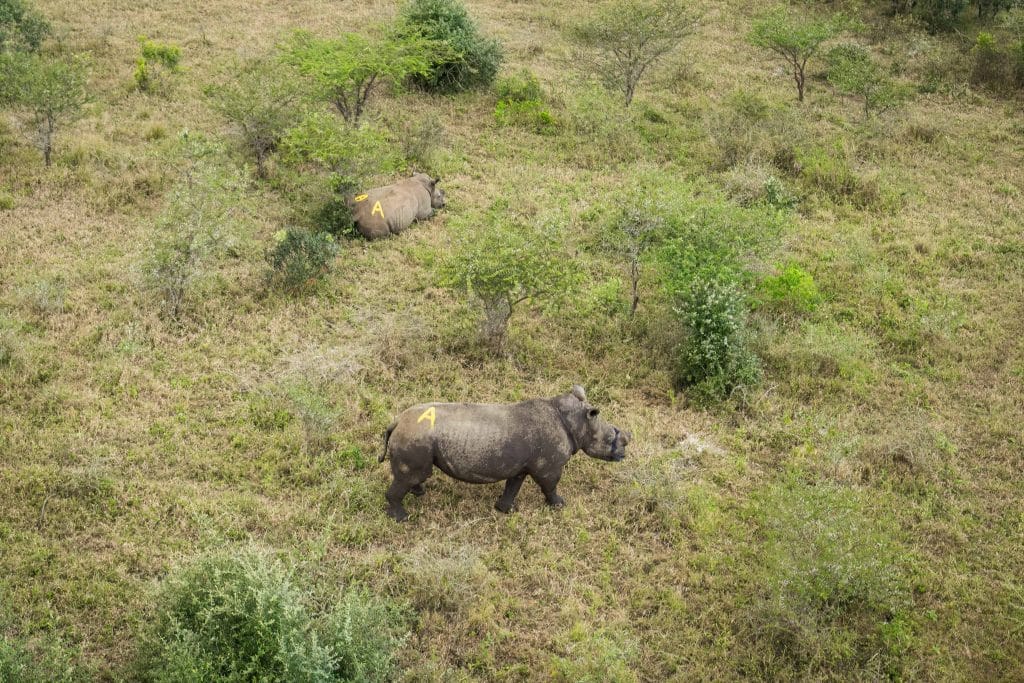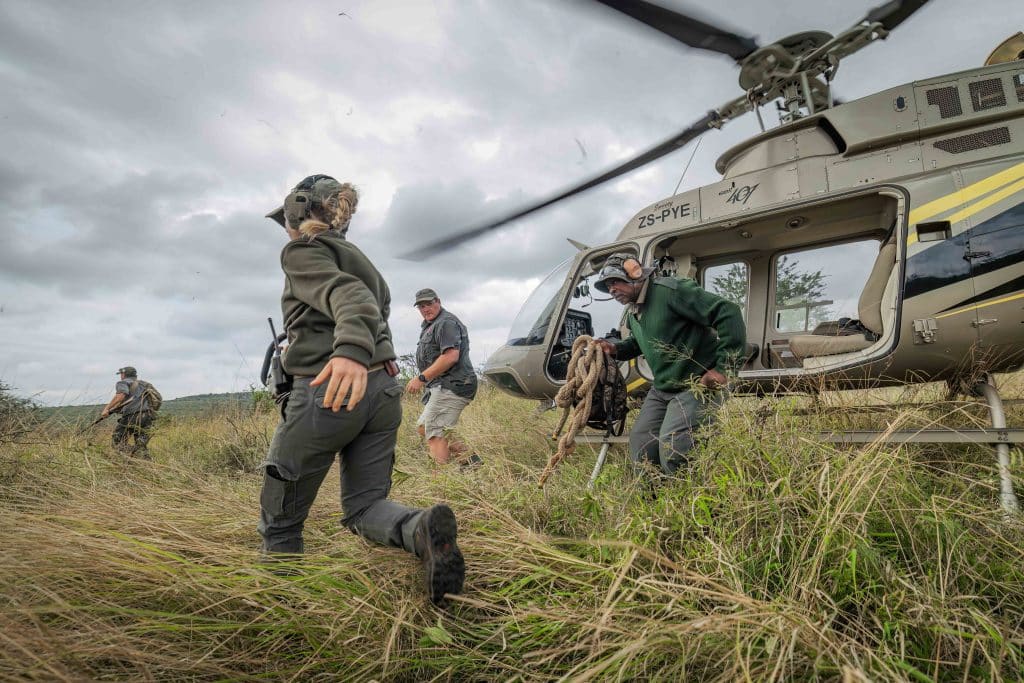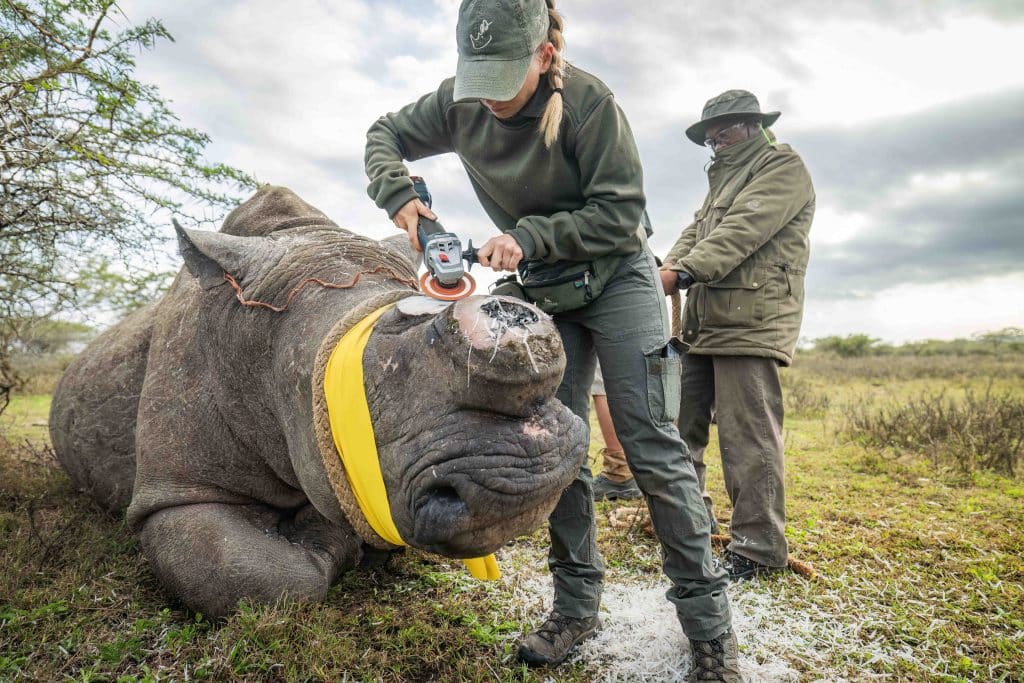KwaZulu-Natal feels almost like another country compared to the rest of South Africa. Here, subtropical forests and savannahs meet the borders of Mozambique, and the landscape is as culturally complex as it is ecologically rich. But this richness comes with vulnerability: cross-border trafficking routes, layered criminal syndicates, and nearby communities facing high unemployment create one of the most dangerous frontlines for rhino protection.
Today, we start with a look at history. In 1895, there were fewer than 50 southern white rhinos left in the world, and they were all here, in Hluhluwe–iMfolozi Park. Through Operation Rhino, bold protection and translocation efforts led by Ian Player & the Natal Parks Board eventually resulted in the seeding of the current 17,000 white rhinos worldwide. In the following decades, regulated hunting and wildlife ownership laws—such as South Africa’s 1975 Game Theft Act- provided private landowners with an economic incentive to protect and breed rhinos. The closure of the pseudo-legal trophy hunting route to the Vietnamese in 2012 was closely linked to a sharp rise in illegal poaching, as the market shifted from exploiting regulatory loopholes to relying entirely on black-market networks. The lesson from history is clear: rhinos can be saved through adaptive, well-governed, and locally grounded conservation strategies that make economic sense for the regions.

Fast-forward to early 2024, and a crisis necessitated urgent action. Hluhluwe–iMfolozi Park lost nearly 300 rhinos in just a few months, a reminder of how quickly poaching syndicates can devastate a population. In response, managers made a bold decision: to dehorn the entire remaining population within nine weeks. Now we come to the same area to perform the maintenance dehorning needed to keep deterring potential wildlife crime syndicates.
The operation we supported in Hluhluwe–iMfolozi Park is conservation and fieldwork at its most intense. Two helicopters and three dehorning teams worked simultaneously across wild, inaccessible terrain in Big 5 country.

The air team locates rhinos from above, with the pilot positioning precisely for the veterinarian’s dart. Once the rhino is immobilized, the second helicopter drops ground teams into any small clearing possible in the thick bush, sometimes hundreds of meters from the animal. In this landscape, landing sites were often extremely limited, with barely enough space for rotor clearance. Teams then push through any type of vegetation and terrain to reach the rhino, all while staying alert to other Big 5 species in the area — lions, elephants, buffalo, or leopards, or other black and white rhinos.
On the ground, the rhino is blindfolded and earplugged to reduce sensory stress. Its horn is removed just above the growth plate with a chainsaw, in a careful and precise way, then smoothed with an angle grinder. Each horn is weighed, marked, and microchipped to ensure traceability, while morphometric measurements and DNA samples complete the biological record.

Once the reversal drug is administered, the team swiftly retreats to a safe distance or is lifted out by helicopter. White rhinos usually wake slowly, calmly returning to grazing or searching for their herd again. In contrast, black rhinos can regain mobility quickly and might charge at the first unusual sight. This process is repeated until the end of the day, with the choppers refueling and the team able to dehorn up to 40 rhinos in a single day. The teams do this for weeks.
What stands out just as much as the intensity of fieldwork itself is the camaraderie. These operations bring together the incredible people of KwaZulu-Natal Parks Board and Ezemvelo KZN Wildlife, alongside experienced veterinarians, pilots, and rangers. The intensity and teamwork forge incredible trust and relationships with the team.
Beyond the immediate urgency of dehorning, we also spent long sessions discussing with reserve managers and ground staff about fencing, security strategies, and the complex realities of rhino conservation in this landscape. These conversations are as vital as the operations themselves because they shape the long-term policies and approaches that hold everything together.

Our role at the Rhino Recovery Fund involves not only supporting urgent field interventions but also providing holistic expertise to local teams. With Markus Hofmeyr, our director and experienced veterinarian who has traveled extensively and worked worldwide on rhino operations, we connect local experiences with international best practices. This exchange of ideas enhances rhino conservation at every level: from the ground team caring for a sedated animal to the global strategies that ensure the species’ long-term survival.

